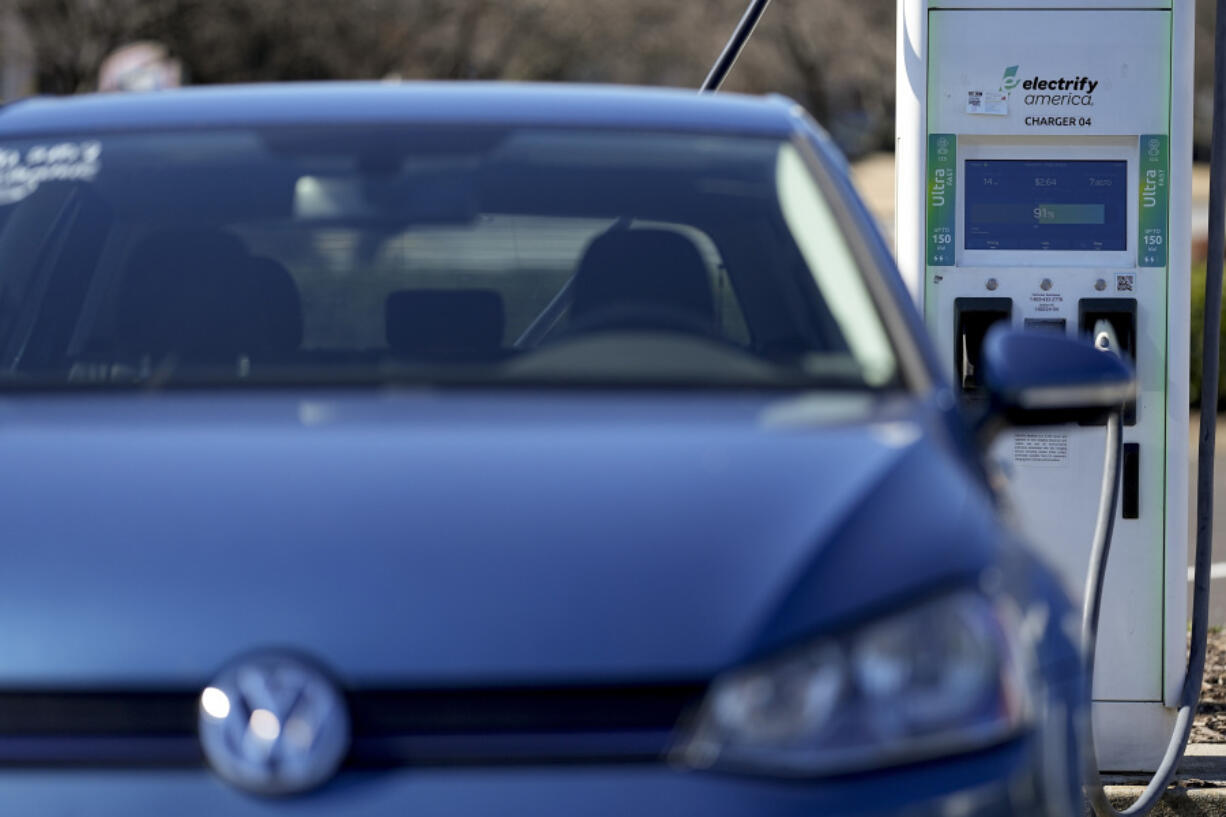SEATTLE — It’s a good time to buy an electric car.
Some federal incentives are easier than ever to access, and the state is putting the final touches on its own rebates set to launch this spring — on top of a current statewide sales-tax exemption (more on that later).
Driving a car is still very much a necessity for many Washington residents. The average Seattle metropolitan area household still drives about as much as the national average, according to a study completed last year by the Brookings Institute.
Those tailpipe emissions from families’ SUVs, or their produce and Amazon orders that travel by trucks, ships, trains and planes, accounted for the largest swath of Washington’s climate-warming emissions by the latest count.
- What kind of rebates can I get?
If you’re in the market for an EV, some Washington dealerships are applying an upfront federal tax credit of up to $7,500 on some new plug-in hybrid and fully electric cars, and up to $4,000 on used models. The U.S. Department of the Treasury declined to share the list of dealers that have signed up for the instant rebates, so be sure to ask as you shop around.
New rules from the Biden administration cut the number of cars eligible for the full tax credit because of requirements around where the battery components were extracted, processed or assembled. Some models that were previously eligible for up to $7,500 are now only eligible for $3,750.
That, in some cases, can be combined with a state sales tax waiver on up to $15,000 of the purchase price of new cars valued at $45,000 or less, or used cars that run $30,000 or less.
Coming later this spring, you can expect an additional rebate from the state, said Steven Hershkowitz, transportation electrification policy lead for the state Department of Commerce. The department plans to prioritize rebates for people with lower incomes, or who live in communities with disproportionally high levels of air pollution or who drive a high number of miles for work, Hershkowitz said.
- Just how super are these drivers?
Washington’s gasoline “superusers” each burn an average of 1,903 gallons of gasoline a year, or about five times more than the average driver, according to the latest report by Seattle nonprofit Coltura.
Though they’re roughly 8.8% of Washington drivers, according to Coltura’s research, they use about 32% of gasoline consumed by passenger vehicles. Nationally, about 92% of gasoline is burned in light-duty vehicles. Medium-duty vehicles along with lawn mowers, Jet Skis, generators and lots of other small devices make up the other 8%, according to Coltura.
On average, these 384,000 “superusers” spend 14.2% of their household income on gasoline, and drive an average of 742 miles per week.
“If you don’t get that population, it is like virtually impossible to meet climate goals,” said Matthew Metz, founder and co-executive director of Coltura.
Washington state lawmakers commissioned a similar study of high-consumption fuel users, which is expected to help shape the state’s incentive programs. It’s one of the first states to consider these types of incentives intended to target the greatest contributors to greenhouse gas emissions.
The new program is slated to begin this spring and last through at least June 2025. The program will be announced in the coming months.
For now, you can check to see what models are eligible for the current credits using our interactive below. Be sure to confirm eligibility with the dealership before you buy.
- What models of cars qualify for the rebates?
Last month, the federal government updated its list of vehicles eligible for a tax credit up to $7,500, applied at the dealership. The state also offers a tax waiver on clean alternative fuel vehicles, which applies only to new cars valued at $45,000 or less, or used that run $30,000 or less. Be sure to confirm eligibility with dealerships.
The federal tax credit applies to all-electric, plug-in hybrid and fuel cell electric vehicles. The availability of the credit will depend on the vehicle’s cost, final assembly location, battery component and/or critical minerals sourcing, and the buyer’s modified adjusted gross income.
Sources: Internal Revenue Service, last updated Jan. 24. (Frank Mina / The Seattle Times)
Just over 13% of new passenger vehicles registered in the state in 2023 were either fully electric or plug-in hybrids, which can be powered by both a charge and a tank of fossil fuels, according to data provided by the state Department of Licensing.
“We’re among the top three in terms of EV purchases across the country,” Jake Fey, chair of the House Committee on Transportation, said. “So it obviously has had influence.”
- So what does all this mean for our climate — and can it make a difference?
Electric vehicles aren’t going to bail us out of the climate crisis. While they may not emit greenhouse gas emissions from their tailpipes, some still tap into electricity grids that include coal and gas-fired power. And, in some cases, the lithium mining rush to make batteries has threatened tribal sovereignty and water quality.
Yet the mineral, a necessary component in the batteries that fuel these cleaner cars, is essential to some to hold up the internationally agreed upon limit of 1.5 degrees Celsius of climate warming to avoid worst-case climate disasters.
For some, cars are never the answer. They pose a threat to people who choose to walk or bike, and, in urban settings, car trips can often be replaced by more readily accessible (though not always reliable) bus rides, or electric and cargo bikes.
Reducing climate-warming emissions and improving communities’ health is going to take a little bit of everything.
A 2022 study found swapping out 35% of gasoline-powered cars for EVs, and replacing half of short (about 5 miles or less) car trips with walking or biking would reduce carbon dioxide emissions by almost a third, and reduce the number of fatal traffic injuries and cases of asthma associated with exposure to pollution.



